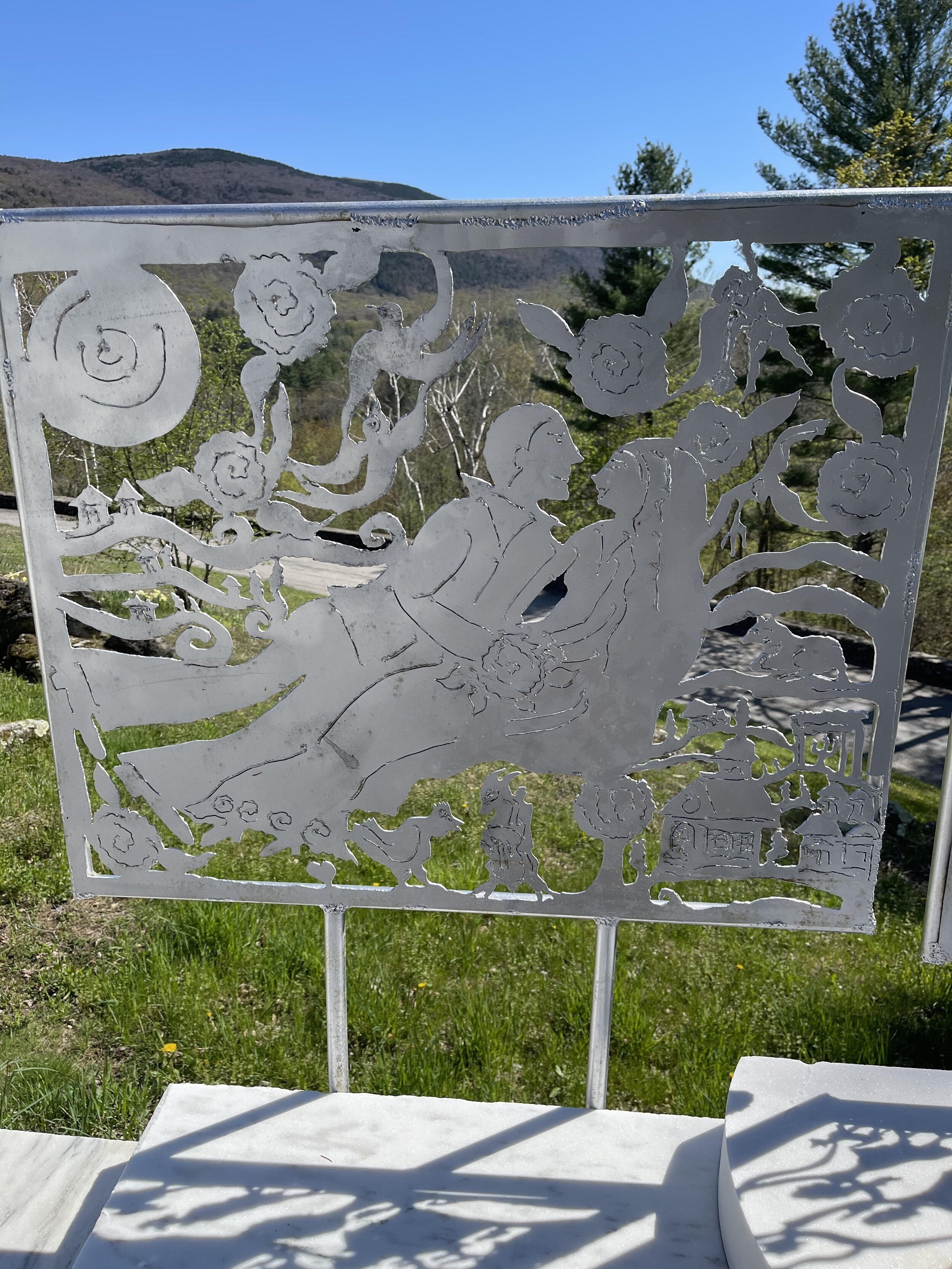THE FENCE AT THE CHAPEL OF THE VOWS
The unconscious is a homeostatic mechanisms that resolves conflict, processing unpleasant psychic tension into social emotional adjustment, and normative conciliation through attitude change. This function of the unconscious is energy transformation, catharsis, emotional growth; we call it psycho-synthesis similar to plants’ photo-synthesis.
The fence exhibit presents awareness of the process, a six-role syndrome, and four modalities, the spirals, as the unit order, as the key to integrating knowledge and self-knowledge. We observe these distinctions as the wave of the six roles and the choice of modalities in many familiar symbolic systems.
The fence exhibit applies formal analysis in many symbolic systems as the four alternatives identified along the relational modality distinctions. Religions recognized the process as Genesis and the optimal modality of conflict resolution as dictated by god in the Ten Commandments. The Judaic religions recognized the personality distinctions in the four characters of the Passover ritual asking what is special about this night.
We detect the personality types of the four characters of the Wizard of Oz, placing them in the set of corresponding spirals as their diagnostic differences. We detect this order in the Abrahamic prophets and dealing with the riddle of the sphinx as the alternative ways of dealing with women. Moses holding onto the Torah, Mohamed riding the Burak, a woman’s head as the marvelous horse, sacrificed Jesus being held in the arms of his mother.
We also distinguish the four cultural responses to temptation, the Apple being the forbidden fruit for the judaic culture, the apple of discord for the Greek culture, the sacred cow for India, and the heart of the person wrenched out of his chest in the Aztec culture. Another version of resolution is presenting with four children of the wizard of Oz story here with the Dorothy, the lion, the tin man and the scarecrow. It is also the series of paintings in the Gorski retrospective
The fence begins with the signs of a deck of cards evolving from the spade through the club into the diamond and then the heart. Then follows a square with the figures of the king of the queen in opposite positions one said set presenting upright figures and another set, upside down figures
The unconscious conflicts resolution process represents the yardstick measuring rod how are universal order. The science of energy transformation uses to scientific phenomena the simple harmonic motion as the process of resolving conflict along four different relational modalities is the simple harmonic motion and the second is the equilibrium scale. What is interesting in all of these symbolic systems is recognizing the position of the different figures diagnosed as a relational modalities. The point conveyed by this exhibit is that all phenomena having emotional dimensions along with the distinctions of power and attitude along the four modalities. The process is universal it is manifested in the museum five exhibits in the sculptural trail, in the sanctuary exhibits, in the Gorski Retrospective.
Couples must learn about these distinctions upon taking the vows. Relations begin with love but they are full of stressors leading to conflicts and it is important to know the choices in dealing with personal sensitivities and distortions of reality.
The fence exhibit is completed with the celebration of conflict resolution presenting the happiness of a wedding celebration, two sets of the couple joined by the community of guests dancing. The fence ends presenting the waves of the couple intertwined like the DNA’s of the couple leading to fireworks, symbolizing the miracle of procreation.






